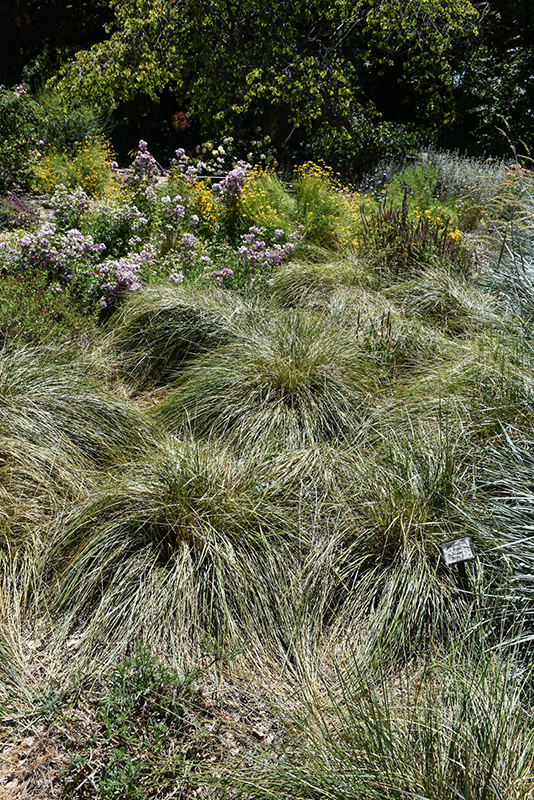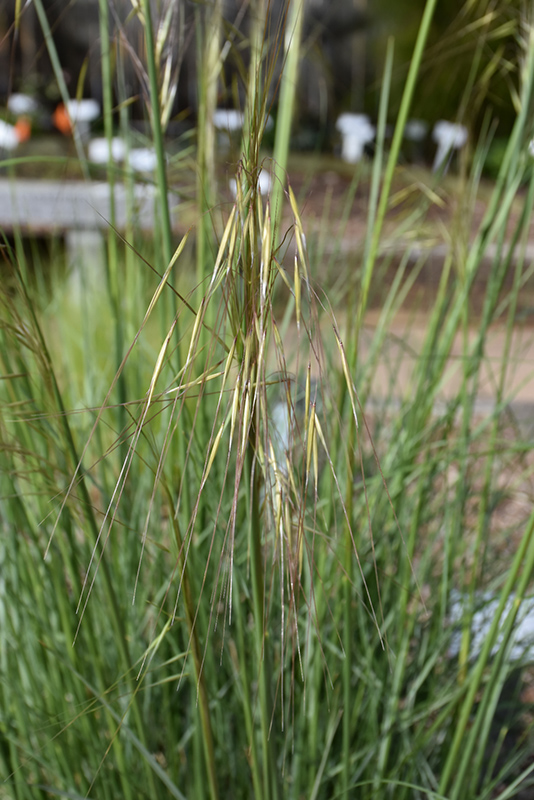Plant Height: 24 inches
Flower Height: 6 feet
Spread: 3 feet
Sunlight:
![]()
![]()
Hardiness Zone: 5a
Other Names: Giant Feather Grass, Giant Needle Grass
Description:
An impressive selection that forms a dense mound of arching gray-green leaves; rising golden flower spikes sway in the breeze and persist into winter; perfect for borders, as a striking accent, or in prairie plantings; low maintenance
Ornamental Features
Golden Oats features airy plumes of brown flowers held atop the stems from mid to late summer. The gold seed heads are carried on showy plumes which fade to tan over time, which are displayed in abundance from late summer to late winter. Its grassy leaves are grayish green in color. As an added bonus, the foliage turns a gorgeous harvest gold in the fall.
Landscape Attributes
Golden Oats is a dense herbaceous perennial grass with an indistinguished habit of growth. It brings an extremely fine and delicate texture to the garden composition and should be used to full effect.
This is a relatively low maintenance plant, and is best cleaned up in early spring before it resumes active growth for the season. Deer don't particularly care for this plant and will usually leave it alone in favor of tastier treats. It has no significant negative characteristics.
Golden Oats is recommended for the following landscape applications;
- Accent
- Mass Planting
- Rock/Alpine Gardens
- Border Edging
- General Garden Use
- Naturalizing And Woodland Gardens
Planting & Growing
Golden Oats will grow to be about 24 inches tall at maturity extending to 6 feet tall with the flowers, with a spread of 3 feet. Its foliage tends to remain dense right to the ground, not requiring facer plants in front. It grows at a fast rate, and under ideal conditions can be expected to live for approximately 20 years. As an herbaceous perennial, this plant will usually die back to the crown each winter, and will regrow from the base each spring. Be careful not to disturb the crown in late winter when it may not be readily seen!
This plant does best in full sun to partial shade. It is very adaptable to both dry and moist growing conditions, but will not tolerate any standing water. It is not particular as to soil type or pH. It is somewhat tolerant of urban pollution. This species is native to parts of North America. It can be propagated by division.


